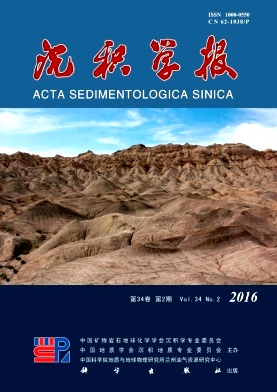Reservoirs of the Lower Cambrian Microbial Reefs and Its Significance on Petroleum Exploration, Tarim Basin, NW China
doi: 10.14027/j.cnki.cjxb.2016.02.017
- Received Date: 2015-05-14
- Rev Recd Date: 2015-07-03
- Publish Date: 2016-04-10
-
Key words:
- microbial reef /
- reservoir characteristics /
- Tarim Basin /
- Lower Cambrian /
- hydrocarbon exploration
Abstract: The microbial reef reservoirs of the 2nd submember in the upper part of the Lower Cambrian Xiaoerbulak Formation have been researched based on outcrop section, thin section identification and experiment analysis in the west of North Tarim to Kelpin area. The microbial reefs were found in south of the study area, of which the largest number and volume growth in Kungaikuotan section, showing a nearly E-W distribution, while less development in Yingersu and Sugaitebulak sections. 6 kinds of reservoir space developed in the microbial reef dolostones:intragranular pores, intergranular pores, dissolved pores, fenestral pores, micro-fractures and stylolites. But the reservoir characteristics are far from expectative goals, the average porosity and permeability are only 1.84% and 0.91×10-3 μm2, belongs to ultra-low porosity and ultra-low permeability reservoirs. It's difficult to the effective reservoirs of Lower Cambrian in Tarim Basin. Combined with previous work, the microbial reefs should not be used as the key objects of hydrocarbon exploration in Lower Cambrian and even older strata, whereas the microbial bank can be used as the next major explorative horizon.
| Citation: | WANG Kai, GUAN Ping, DENG ShiBiao, LIU PeiXian, JIN YiQiu. Reservoirs of the Lower Cambrian Microbial Reefs and Its Significance on Petroleum Exploration, Tarim Basin, NW China[J]. Acta Sedimentologica Sinica, 2016, 34(2): 386-396. doi: 10.14027/j.cnki.cjxb.2016.02.017 |






 DownLoad:
DownLoad: